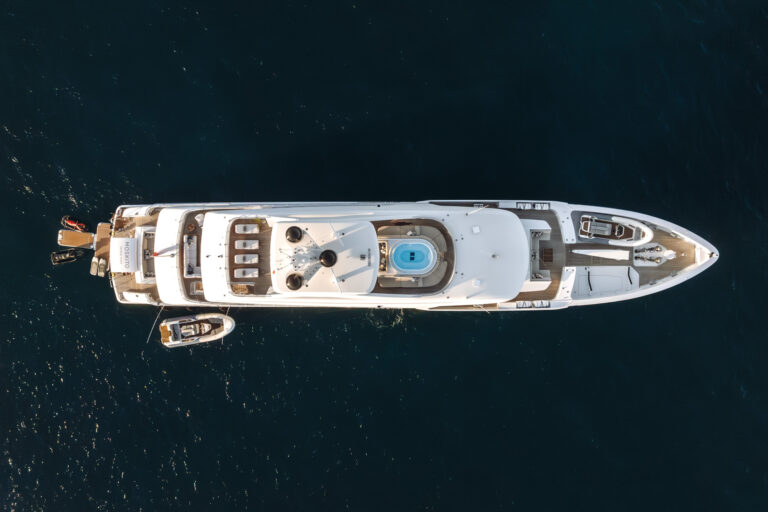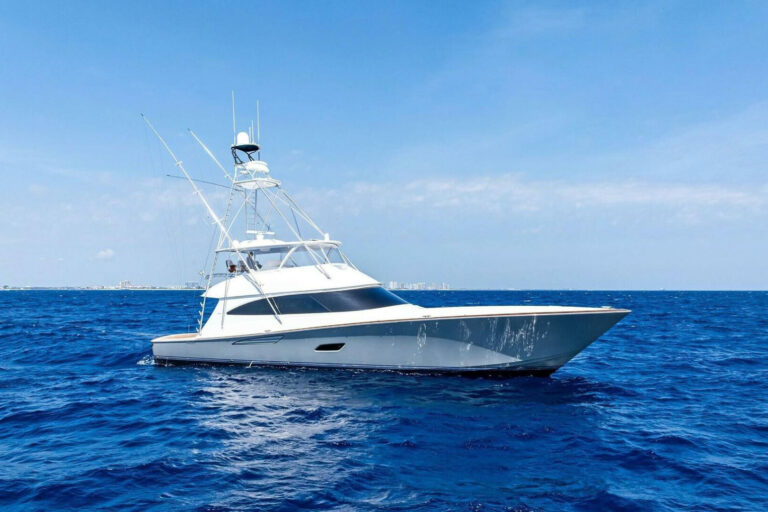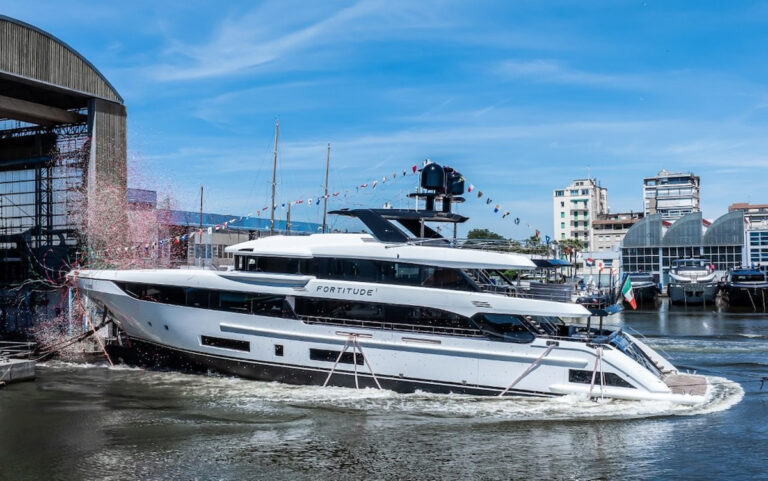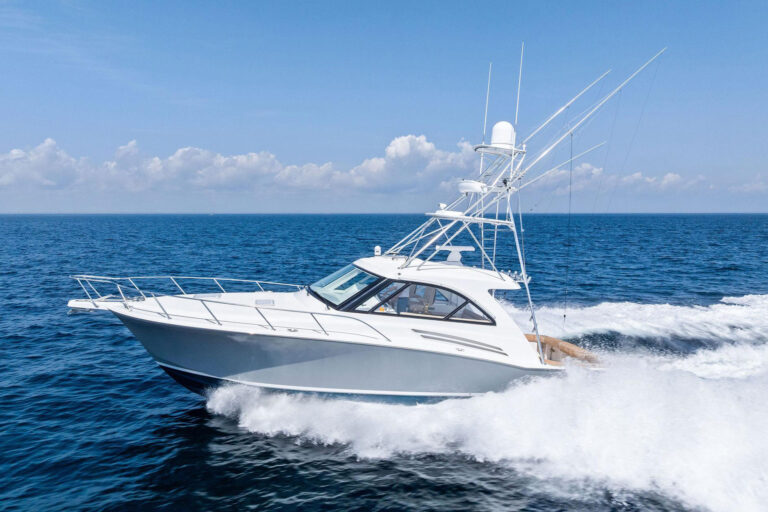Electronic technology is finally beginning to address one of life’s most irritating and frequently asked questions: Are we there yet? In automobiles, boats and airplanes-and even on woodsy hiking trails-the inquiry comes from children (and adults behaving like children) impatient to reach their destinations. Magellan’s new SporTrak Pro Marine may not exactly make your boat go faster, but it provides an elegant answer regardless of where you are when that dreaded question comes your way.
Magellan introduced its first handheld GPS receiver in 1989. The SporTrak Pro Marine, the company’s latest geared for use on the water, contains a 12-channel WAAS/EGNOS GPS receiver that provides positional information with an error of less than 3 meters horizontally and less than 10 meters vertically. The built-in mapping database occupies 15 MB of memory, with 17 MB of free-memory space set aside for additional charts. Information is displayed on a backlit, adjustable-contrast 2.2-by-1.4-inch grayscale LCD with a resolution of 160 by 104 pixels. All this in a waterproof, buoyant package about the size of a cellular telephone and weighing only 6.1 ounces with its two AA batteries.
The unit’s eight icon-identified buttons help keep the SporTrak’s operation completely straightforward. Pressing the button marked with a red light bulb produced a beep and summoned the usual initial screen displays: unit identity (including Magellan’s Web address), database copyright notice (Navionics) and “lawyer letter disclaiming responsibility for what you may do with the unit. You must select “enter to indicate you have been warned. Failure to acknowledge the message will cause the unit to shut off.
First, we checked the GPS status and battery-power display. Though the SporTrak had traveled a distance of more 1,000 miles since it was last used, it completed satellite acquisition and position fixing in well under the two minutes called for in the specifications.
The SporTrak’s eight navigation-data display screens can be sequentially selected using the key marked with a globe. The key marked with an open book provides access to a 13-item main menu and 19 choices in the setup menu. The SporTrak may be a handheld device, but its range of available options is in no way limited. Virtually any option you would expect to find in a large, fixed-mount GPS chart plotter is present, plus a few-such as information about cities, highways, airports and parks-unique to terrestrial use. Both tide station and sun/moon pages are provided, as well, along with a fish/hunt page. The eight-chapter, 58-page on-screen help menu was particularly useful during the initial get-acquainted phase and will be invaluable when a bit of mental rust sets in after a period of non-use.
The “Nav 2 screen allows the user to select a built-in marine chart or terrestrial map. Seventeen map scales are available, ranging from 100 feet to 1,400 miles per half-inch of screen display, with rapid scrolling made possible by the unit’s fast processor. Map display choices include “north up, “course up and “track up, with five choices for map detail. The track plot function allows for storage of 2,000 points with selection of “off, “auto, “auto-detailed and seven defined intervals, from .01 to 2 miles, between position recording. Though the built-in chart database does not provide detailed coastal marine charts, all navigation marks in the areas we investigated were plotted and could be readily identified by description and position. Detailed coastal marine charts can be uploaded into the unit’s 17 MB of free memory.
Using the SporTrak on our boat was a totally pleasant experience. The technology built into today’s GPS navigators is amazing, especially to those of us who recall when a loran A fix was a thing of wonder and beauty. The position screen displayed nine data items.
Nav screens three, four, six, seven and eight provide data related to your selected destination. The unit’s default displays convey information pertaining to course, heading, distance and speed. Any of these data displays can be customized. “Nav 3 includes a 360-degree compass rose and will likely be popular with mariners who also fly aircraft. The compass includes a clever innovation Magellan calls NorthFinder, a means for determining approximate direction even when the GPS is not moving at the .43 knots required for direction determination using satellites. Using its GPS-derived location and the date and time, the display shows the position of the sun and/or moon at the outer edge of the compass rose. Aligning the unit with the position of a visible celestial body provides a useful, if approximate, heading orientation. Although it’s likely more useful to those hiking than to those on a boat, this feature speaks well of Magellan’s desire to provide whatever might be useful for navigation.
“Nav 5 includes latitudes and longitudes to three decimals, along with date, time and datum in use. “Nav 6 presents the usual roadmap display with bearing, heading, distance and speed shown digitally. The seventh nav screen shows speed, distance, VMG (velocity made good), XTE (cross-track error), heading, bearing and a horizontal tape compass readout. “Nav 8 is dominated by a semicircular speedometer and an odometer, which will likely see more use on land than on water.
Especially attractive was the ease with which a file of track points can be saved as a route, good for when you’re exploring an uncharted, shallow area. When used with an optional external power/data cable and a mounting bracket, the SporTrak can supply steering information to the boat’s autopilot, allowing the helmsman to spend more time assessing the surrounding areas and ensuring navigation safety.
The 17 MB of free memory can be loaded with charts from Magellan’s MapSend Streets & Destinations database for Canada or the U.S., MapSend Topo for the U.S. or other terrestrial databases for Europe and elsewhere. Mariners will find the BlueNav detailed coastal marine charts of greatest value.
Advances in electronic technology, particularly microminiature components, fast microprocessors and massive memory capacities, have helped create a handheld GPS navigator with nearly the capability-if not the screen size-of large, fixed-mount units. For this reason, the SporTrak Pro Marine will make a valuable addition to any boat. If I could add one thing to the SporTrak’s options list, it would be a large, fixed display screen that connects to the handheld via a wireless BlueTooth communication channel. Other than that, though, this little nav aid is right at home with the big boys. Price: $300.
Contact: Magellan, (800) 707-9971; www.magellangps.com
Click here to buy Magellan products.









